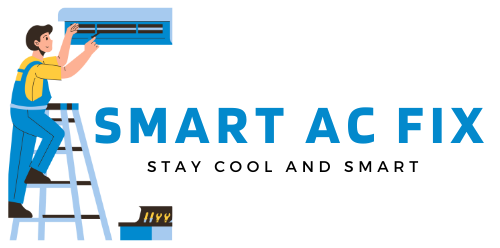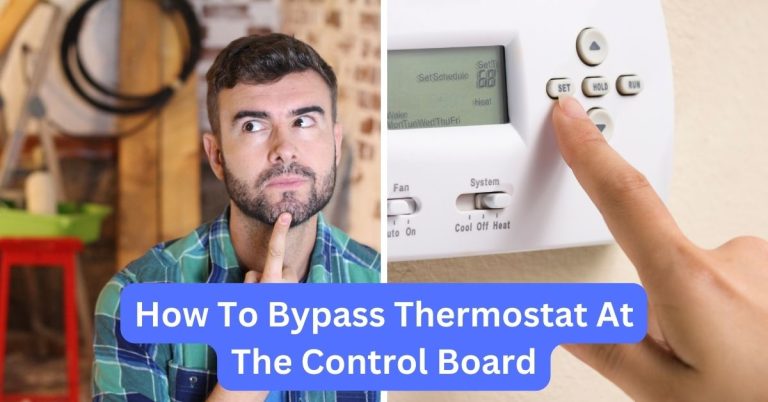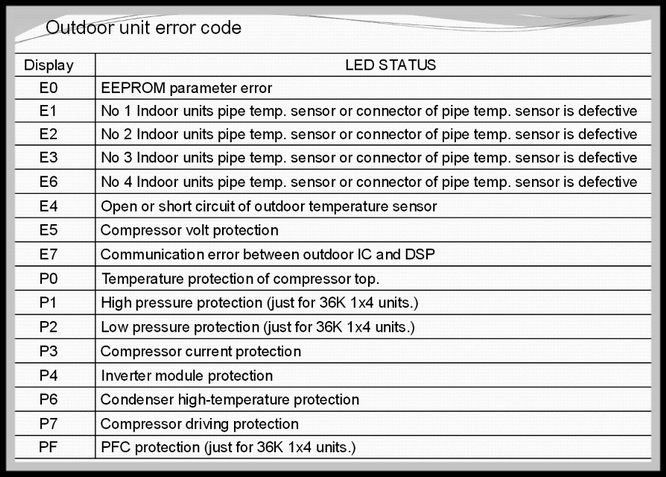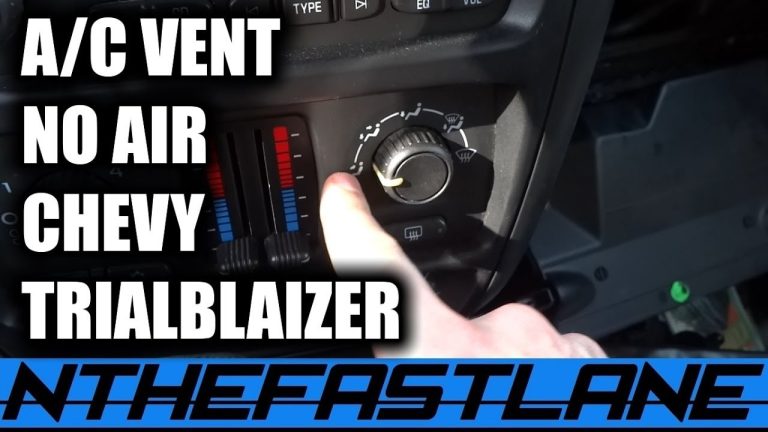Ac Making Hissing Noise And Not Cooling? Here’S Why & How To Fix It!
There can be multiple causes for an AC unit making a hissing noise and not cooling. Some possible reasons could be a refrigerant leak, a compressor problem, or a clogged air filter. It is important to troubleshoot and address these issues to restore cooling efficiency and prevent further damage to the unit.
Did you know that your air conditioning unit can make a hissing noise and fail to cool your home? It’s a frustrating situation, especially when you’re counting on your AC to keep you comfortable during those scorching summer months. But fear not, because today we’re going to uncover the reasons behind this problem and show you how to fix it.
For homeowners and individuals who rely on their air conditioning units to maintain a pleasant indoor environment, this issue can be a real headache. The hissing noise could be an indication of a refrigerant leak or a problem with the compressor.
And when your AC fails to cool, it not only makes your living space unbearable but also puts your unit at risk of potential damage. But don’t worry, we’re here to guide you through the troubleshooting process and help you get your AC back in top shape. So, let’s dive into the possible causes behind the hissing noise and lack of cooling, and discover the effective solutions to restore the comfort you deserve.
Get ready to beat the heat with our step-by-step guide to fixing your AC!
I. Understanding the Issue: AC Making Hissing Noise and Not Cooling
A. Definition of the problem
When your air conditioning unit is making a hissing noise and fails to cool your home, it indicates that there is a problem with the system. The hissing noise is often a symptom of an underlying issue that needs to be addressed. It is important to understand the cause of this problem in order to effectively troubleshoot and resolve it.
B. Importance of addressing the issue promptly
Addressing the issue of your AC making a hissing noise and not cooling is crucial for several reasons. First and foremost, it directly affects your comfort and the indoor temperature of your home. Without a properly functioning AC, the heat and humidity can become unbearable, especially during the hot summer months.
Additionally, ignoring this issue can lead to further damage to your air conditioning unit. If left untreated, the underlying problem can worsen and potentially result in costly repairs or even the need for a complete replacement of the unit. By addressing the issue promptly, you can prevent further damage and save yourself from unnecessary expenses.
C. Potential causes of hissing noise and lack of cooling
There are several potential causes behind your AC making a hissing noise and not cooling. Some common reasons include:
- Refrigerant leak
- Blocked or restricted airflow
- Malfunctioning compressor
- Faulty thermostat
- Electrical issues
- Defective components
Now, let’s dive deeper into each of these causes and explore the solutions to fix the problem.
II. Common Causes of Hissing Noise in AC Units
A. Refrigerant leak
A refrigerant leak is one of the most common causes of a hissing noise in AC units. Refrigerant is a crucial component of the cooling process, and when there is a leak, it can lead to reduced cooling performance.
1. Signs of a refrigerant leak
There are several signs that can indicate a refrigerant leak in your AC unit. These include:
- Reduced cooling performance
- Inadequate airflow
- Frost or ice buildup on the evaporator coil
- Hissing or bubbling noise
- Higher electricity bills
If you notice any of these signs, it is important to address the issue promptly to avoid further damage to your AC system.
2. Impact of low refrigerant levels on cooling performance
Low refrigerant levels can significantly impact the cooling performance of your AC. When there is a refrigerant leak, the amount of refrigerant circulating in the system decreases, resulting in reduced cooling capacity. This can lead to inadequate cooling and discomfort in your home.
3. Importance of professional assistance for refrigerant leak detection and repair
While some homeowners may attempt to fix a refrigerant leak themselves, it is highly recommended to seek professional assistance. Refrigerant handling requires specialized knowledge and equipment to ensure proper detection and repair. HVAC professionals have the expertise to identify the source of the leak and safely resolve the issue.
B. Blocked or restricted airflow
Another common cause of a hissing noise and lack of cooling is blocked or restricted airflow. When the airflow is obstructed, it prevents the AC unit from efficiently cooling your home.
1. Reasons for restricted airflow
There are several reasons why airflow may be restricted in your AC unit. Some common causes include:
- Dirty or clogged air filters
- Obstructions in the air ducts or vents
- Buildup of dust and debris on the condenser coil
- Issues with the fan speed or motor
2. Effects of restricted airflow on cooling efficiency
Restricted airflow can significantly impact the cooling efficiency of your AC system. When the airflow is hindered, the air conditioning unit has to work harder to achieve the desired temperature, resulting in increased energy consumption. This can lead to higher electricity bills and reduced cooling performance.
3. Steps to troubleshoot and resolve airflow issues
There are several steps you can take to troubleshoot and resolve airflow issues in your AC unit:
- Clean or replace dirty air filters regularly
- Clear any obstructions from the air ducts or vents
- Check and clean the condenser coil to remove dust and debris
- Adjust the fan speed or motor settings, if necessary
By addressing these airflow issues, you can improve the cooling efficiency of your AC and eliminate the hissing noise.
III. Troubleshooting Steps for Hissing Noise and No Cooling
A. Preliminary checks
Before diving into specific troubleshooting steps, it is important to perform some preliminary checks to ensure that the issue is not due to a simple fix. These include:
1. Checking power supply and circuit breaker
Make sure that your AC unit is receiving power and that the circuit breaker has not tripped. Sometimes, a simple power issue can cause the hissing noise and lack of cooling. Check the power supply and reset the circuit breaker if necessary.
2. Verifying proper thermostat settings
Ensure that your thermostat is set to the correct temperature and cooling mode. Incorrect thermostat settings can lead to inadequate cooling and the perception of a hissing noise. Adjust the settings as needed.
3. Clearing dust and debris from air filters and vents
Dirty air filters and vents can restrict airflow and affect the cooling performance of your AC. Clean or replace the air filters regularly to maintain proper airflow and prevent hissing noises.
B. Identifying and addressing refrigerant leak issues
1. Conducting a visual inspection for refrigerant stains or oil spots
Inspect your AC unit for any signs of refrigerant leaks, such as stains or oil spots. These can indicate the presence of a leak and the need for professional repair.
2. Utilizing professional tools for leak detection
If you suspect a refrigerant leak but cannot visually identify it, it may be necessary to utilize professional tools for leak detection. HVAC technicians have specialized equipment to accurately detect and locate refrigerant leaks.
3. Repair options for refrigerant leaks
If a refrigerant leak is detected, it is crucial to consult with a professional HVAC technician for repair options. Depending on the severity of the leak, repairs may involve sealing the leak or replacing sections of the refrigerant line. Avoid attempting DIY repairs, as proper handling of refrigerants requires specialized knowledge and equipment.
C. Resolving airflow problems
1. Cleaning or replacing dirty air filters
Dirty air filters can restrict airflow and impact the cooling efficiency of your AC unit. Clean or replace the air filters regularly to maintain proper airflow and prevent hissing noises.
2. Clearing obstruction from air ducts or vents
Obstructions in the air ducts or vents can restrict airflow and reduce cooling performance. Clear any obstructions to allow unrestricted airflow throughout your home.
3. Checking and cleaning the condenser coil
A dirty condenser coil can hinder heat transfer and affect the cooling performance of your AC unit. Regularly check and clean the condenser coil to remove dust and debris.
4. Adjusting fan speed or motor
If you suspect issues with the fan speed or motor, consult with a professional HVAC technician to adjust these settings. Incorrect fan speed or motor operation can lead to inadequate cooling and hissing noises.
D. Other potential causes and solutions
In some cases, the hissing noise and lack of cooling may be caused by other factors, such as a malfunctioning compressor, faulty thermostat, electrical issues, or defective components. It is recommended to seek professional assistance to diagnose and resolve these complex issues.
1. Malfunctioning compressor
A malfunctioning compressor can prevent your AC unit from cooling properly and result in a hissing noise. This is a complex issue that requires the expertise of an HVAC technician to diagnose and repair.
2. Faulty thermostat
A faulty thermostat can lead to incorrect temperature readings and improper cooling performance. If you suspect a faulty thermostat, consult with a professional to diagnose and replace it if necessary.
3. Electrical issues
Electrical issues, such as a tripped circuit breaker or faulty wiring, can cause problems with your AC unit. These issues should be addressed by a qualified electrician or HVAC technician.
4. Defective components
In some cases, hissing noises and lack of cooling can be attributed to defective components within the AC unit. It is important to consult with a professional to identify and replace any faulty components.
IV. Prevention and Maintenance
A. Importance of regular AC maintenance
Regular AC maintenance is crucial for preventing issues with your unit, including hissing noises and lack of cooling. By implementing preventive measures and scheduling annual maintenance, you can ensure that your AC operates efficiently and reliably.
1. Preventive measures for avoiding hissing noise and cooling problems
There are several preventive measures you can take to avoid hissing noises and cooling problems in your AC unit:
- Regularly clean or replace air filters
- Clear debris around the outdoor unit
- Check refrigerant levels
- Inspect and clean evaporator and condenser coils
2. Scheduling annual professional maintenance
In addition to DIY maintenance, it is important to schedule annual professional maintenance for your AC unit. HVAC technicians are trained to identify and address potential issues before they become major problems, helping to prolong the lifespan of your AC and maintain optimal performance.
B. DIY maintenance tips for homeowners
As a homeowner, there are several maintenance tasks you can perform to keep your AC unit in good working condition:
1. Cleaning air filters regularly
Regularly clean or replace air filters to maintain proper airflow and prevent issues with your AC.
2. Clearing debris around the outdoor unit
Clear any debris, leaves, or plants that may obstruct airflow around the outdoor unit. This will ensure optimal performance and prevent overheating.
3. Checking refrigerant levels
Monitor the refrigerant levels in your AC unit and consult with a professional if you suspect a leak or low levels.
4. Inspecting and cleaning evaporator and condenser coils
Regularly inspect and clean the evaporator and condenser coils to remove dust and debris. This will improve heat transfer and prevent cooling issues.
V. When to Seek Professional Help
A. Indications for professional intervention
While some AC issues can be resolved with DIY troubleshooting and maintenance, there are certain indications that warrant professional intervention:
1. Persistent hissing noise and lack of cooling after troubleshooting
If you have followed the troubleshooting steps and the hissing noise and lack of cooling persist, it is recommended to seek professional help. Continuing to troubleshoot without proper expertise can lead to further damage to your AC unit.
2. Refrigerant leak detection and repair
Refrigerant leaks require professional expertise for proper detection and repair. Attempting to fix a refrigerant leak without the necessary knowledge and equipment can be dangerous and may violate environmental regulations.
3. Complex electrical or component issues
If you suspect complex electrical or component issues with your AC unit, it is best to consult with a professional. They have the expertise to diagnose and repair these complex issues safely and effectively.
B. Choosing a reputable HVAC technician
When seeking professional help for your AC issues, it is important to choose a reputable HVAC technician. Consider the following factors when making your decision:
1. Certifications and qualifications
Ensure that the HVAC technician is certified and has the necessary qualifications to work on your AC unit. Look for technicians who have certifications such as NATE (North American Technician Excellence).
2. Customer reviews and recommendations
Read customer reviews and ask for recommendations from friends, family, or neighbors. A reputable HVAC technician will have positive reviews and a track record of satisfied customers.
3. Licensing and insurance requirements
Verify that the HVAC technician is licensed and insured. This provides protection for both you and the technician in the event of any accidents or damages during the repair process.
VI. Conclusion
Dealing with an AC that is making a hissing noise and not cooling can be frustrating, but with the right knowledge and troubleshooting steps, you can resolve the issue. By understanding the potential causes, such as refrigerant leaks and airflow problems, and taking preventive measures through regular maintenance, you can keep your AC unit in top shape and enjoy a comfortable indoor environment. Remember, when in doubt, it is always best to seek professional help to ensure your AC is repaired correctly and efficiently.
How to Find AC Leaks in Your Car (UV Dye)
Frequently Asked Questions (FAQ)
Why is my AC making a hissing noise?
What could be the reason for my AC not cooling?
Can I fix the hissing noise of my AC myself?
Is it safe to continue using my AC if it’s not cooling?
How much does it cost to repair an AC that’s not cooling?
Final Summary: Troubleshooting and Maintaining Your Hissing Air Conditioning Unit
In conclusion, when your air conditioning unit is making a hissing noise and not cooling, it is important to address the issue promptly. Not only does it affect your comfort and indoor temperature, but ignoring the problem can lead to further damage and expensive repairs.
There are several potential causes for the hissing noise and lack of cooling, including refrigerant leaks, blocked airflow, malfunctioning compressors, faulty thermostats, electrical issues, and defective components. It is crucial to identify the cause of the problem in order to effectively troubleshoot and resolve it.
For refrigerant leaks, it is recommended to seek professional assistance for detection and repair, as it requires specialized knowledge and equipment. Clearing obstructions in the air ducts and vents, cleaning or replacing dirty air filters, and checking the condenser coil are some steps you can take to resolve airflow issues. It is important to perform preliminary checks, such as verifying power supply and thermostat settings, and clearing dust and debris from air filters and vents, before diving into specific troubleshooting steps.
Regular AC maintenance, including cleaning or replacing air filters, clearing debris around the outdoor unit, checking refrigerant levels, and inspecting and cleaning coils, is also crucial for preventing issues and maintaining optimal performance. If DIY troubleshooting and maintenance do not resolve the problem, it is recommended to seek professional help. Reputable HVAC technicians with certifications, positive customer reviews, and the necessary licensing and insurance can diagnose and repair complex issues safely and effectively.






